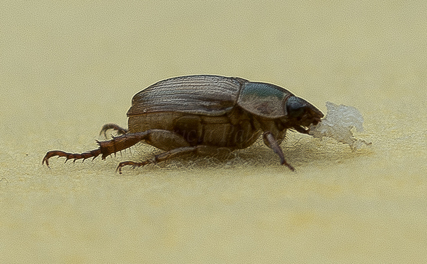Our title is an old saying given to us by Elizabeth Chee-Chee Haile, a princess of the Shinnecock Tribe. It refers to the native practice of gleaning the shore at low tide for a feast of edibles: clams of all shapes and sizes, oysters, mussels, slipper snails, algae and land plants, scaly fish and crustaceans. Many of these wonderful food sources wind up in our markets, provided by people who harvest them for a living, or on our tables when we’ve had a day at the beach to collect them ourselves. Some are not so well-known, yet are prized by the forager of wild foods.
The Razor Clam gets its name as it resembles the straightedge razor first used in the 18th century and still used today. They burrow under the sediment with their foot and extend their short siphons to the surface of the sand to take in plankton. When the tide goes out, the razor clam can quickly burrow deeper into wet sand. The meat of this clam is known to be very sweet and delicious and is becoming more prevalent on restaurant menus.
Bladder Rockweed is an example of a brown seaweed. Like many species of seaweed it uses a holdfast (similar to roots in land plants) to attach to rocks. This seaweed also has many air filled pockets that are used to help the plant float on the surface where it can collect sunlight for photosynthesis (children also have fun popping these pockets like bubble wrap). It is also edible and can either be eaten raw or baked like a potato chip.
Sea Lettuce is a type of green seaweed and grows in sheets that look very similar to lettuce. This seaweed is often used as an indicator for polluted waters as it thrives on nitrates and nutrients that run off from agricultural activities and will become very plentiful. It is edible and sometimes used in salads and soups.
Pickleweed is related to spinach and sugar beets, but resembles a pickle and even shares the salty taste. This plant has two ways to tolerate salt, one way is to release it through the use of sodium-potassium pumps and the other is to store it in vacuoles towards the end of the plant that when full will turn that part of the plant red and then break off. Native Americans used the ashes from this plant to make soaps and glass and the stems were used as a seasoning. Today, in summer, we harvest the tips of the plant (like asparagus) for use in salads, to be steamed like a vegetable or pickled.
Article contributed by BOI Marine Educators Kerri Dobbs and Ann Haskell.
August 27, 2013
Air temp: 81 degrees
Sky conditions: partly cloudy
Wind force: 19-24 mph, fresh breeze
Wind direction: NW Tide, incoming
What we caught: (12:00 tour)
Beach: baby horseshoe crab, a few hermit crabs, mud snails
Seine Net: A LOT of silver sides, big striped killies, comb jellies, hermit crabs, mud snails
Flanders Bay Crab Trap: spider crabs, whelks
Blue Claw Crab Trap (near Colonel’s Island): 2 Blue Claw Crabs (1 male, 1 female)
What we caught: (2:00 tour)
High Beach: Beach rocket, Beach goldenrod, beetles and green flies
Intertidal Beach: fiddler crabs, mud snails
Net: comb jellies, silver sides, striped killies, grass shrimp
Flanders Bay Crab Trap: spider crabs
Contributing BOI Interns for 2013 include Sarah Sandler, Advanced Science Research at Calhoun HS, and Michele Viera, Charlotte Schmidt, and Andrew Kumpfbeck from the Avalon Park and Preserve S.T.A.T.E. program.

